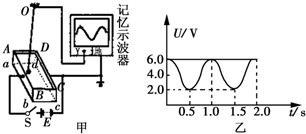After the terrorist attacks in America last September, terrorist risk became the pariah of perils. The airline industry was most directly affected by the attacks, and it was the first to find that no one wanted to insure terrorist risk. Insurance companies immediately increased premiums and cut cover for airlines’ third-party terror and war liabilities to $ 50m per airline, per "event". Under pressure from airlines, the American government and the members of the European Union agreed to become insurers of last resort for airlines’ war and terrorist liabilities, for a limited period. These government guarantees are due to expire at the end of the month.
The American government has already agreed to extend its guarantee for another 60 days. The EU’s transport ministers are meeting next week in Brussels to decide what to do. Insurers and reinsurers are keen for the commercial market to resume the provision of all airline insurance as soon as possible. No wonder: The premiums for such cover have inevitably increased considerably.
However, in the case of terrorism, and especially of terrorism in the skies, a number of special factors arise. Some are purely practical: a disaster as sudden and unforeseen as the attacks on the World Trade Center has had destructive effects on the insurance industry. The maximum cover for third-party terrorist risk available in the primary aviation market is now $ 50m, and that is not nearly enough cover risks that are perceived to be much higher since September 11th. Even if the market could offer sufficient cover, another catastrophe on such a scale would be more than the market could cope with.
In addition, a rare and devastating risk of a political nature is arguably one that it is right for governments to cover, at least in part. In the wake of attacks by Irish terrorists the British government has recognized this point by agreeing to back a mutual fund to cover risks to property from terrorist attack.
In the case of the airlines, the appropriate answer is some form of mutual scheme with government backing. In fact, under the code-name "Equitime", representatives of airlines, insurers and the American government are setting up an insurance vehicle to be financed by airlines and reinsured by the government. Governments would guarantee the fund’s excess. risk, but their role would diminish as the fund grew.
Setting something up will take time. So, to bridge the gap, governments will have to remain insurer of last resort for airlines’ war and terrorist risk for some time to come.
The writer argues that in the foreseeable future the insurer of last resort for airline’s terrorist risk will be()
A. insurance companies
B. governments’ guarantees
C. airlines themselves
D. mutual fund schemes

